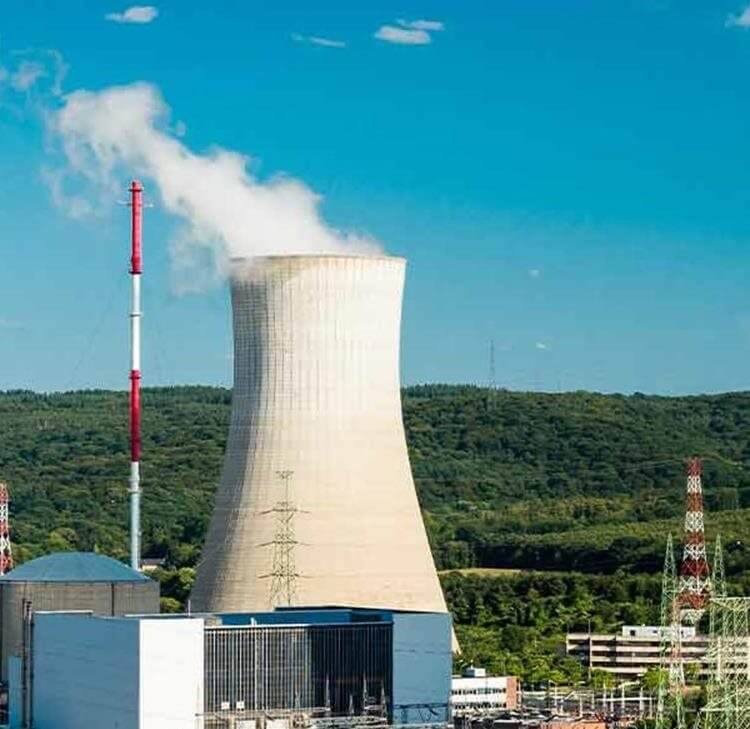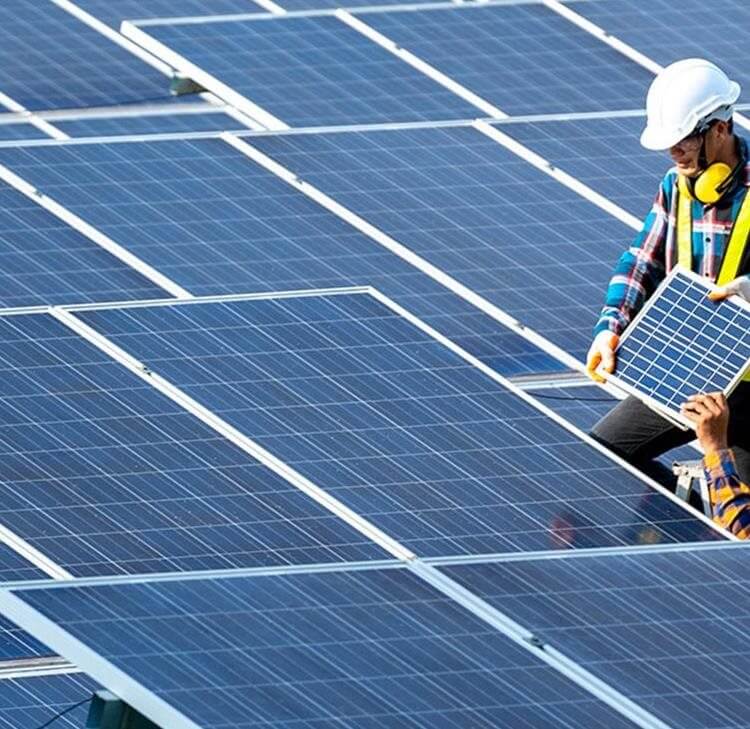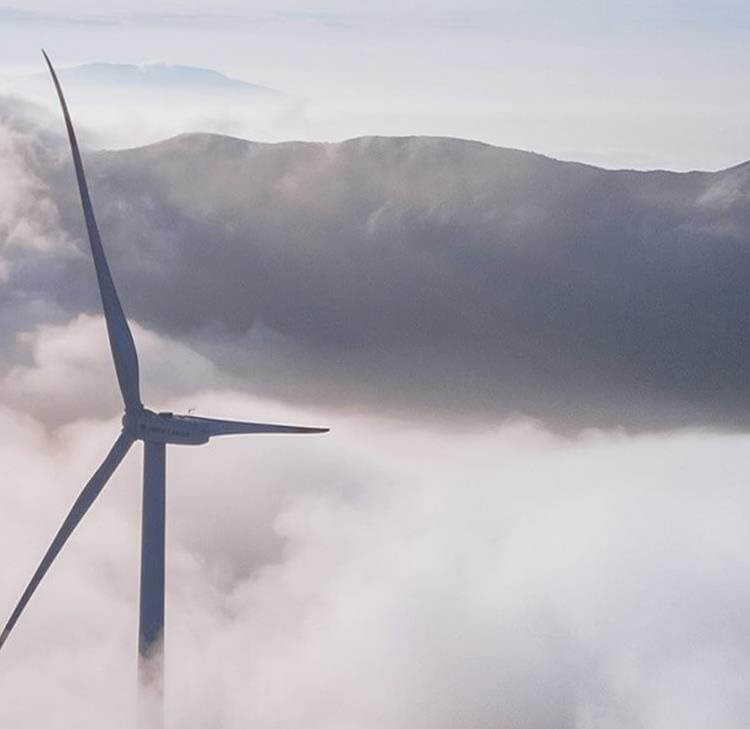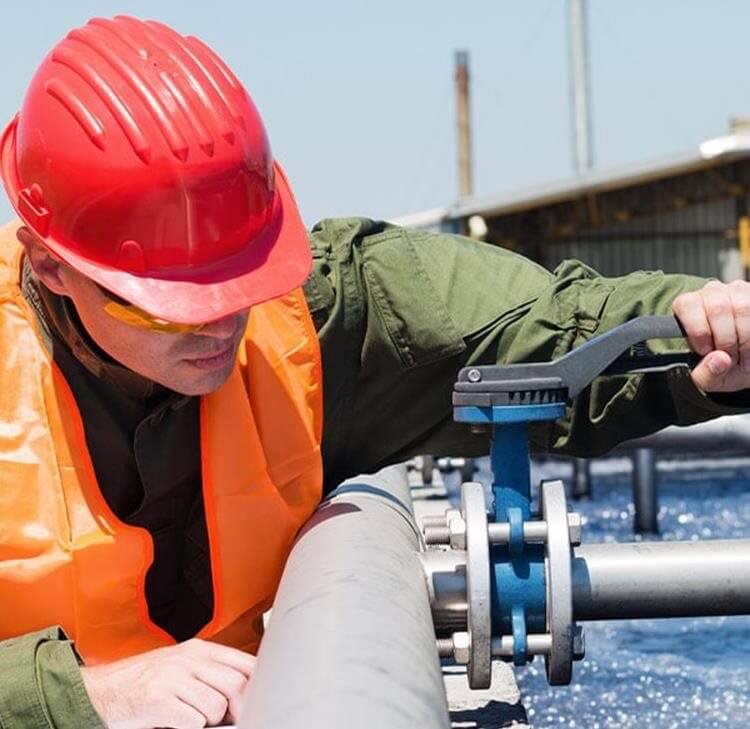Contract structure and overview for Sleeved and Physical PPAs
The simpler nature of the Physical PPA arrangement provides for a more simple contractual relationship, where there is a direct agreements between the Generator and the Consumer in which the Generator produces and delivers the renewable energy to the Consumer directly and, in return, the Consumer pays for that energy. However, Sleeved PPAs are more complex in nature.
In the Sleeved PPA structure the licensed supplier (i.e. the Utility) 'sleeves' the volumes of electricity (which are purchased by the Consumer from the Generator and on-sold to the Utility) into the supply arrangements between the Consumer and Utility. As such, there are three parties involved in the arrangement, being the power Generator, the licensed Utility and the Consumer (i.e. the end-user).
Generally, the Sleeved PPA will be between the Generator and the Consumer, as well as a back-to-back agreement between the Consumer and the Utility where the Utility acts as the Consumer’s agent in managing the offtake as well as taking care of all balancing services and grid access, with the Consumer paying for the cost of electricity delivered in a 'sleeving fee' to the Utility.
Direct/Physical PPA or Sleeved PPA
Whilst exploring the possibility of entering into a Sleeved PPA or a Direct/Physical PPA, there are numerous practical considerations for a Consumer to take into account, such as, whether a Direct PPA is even possible based on the site location and geography. However, it is also crucial to understand the key differences in contract drafting and negotiation between the two forms of Sleeved PPA and Direct PPA. This understanding will ensure that your interests are adequately protected and that the PPA that you select aligns with your energy procurement goals, and this is a service that our Energy and Infrastructure experts can assist with.
In a Sleeved arrangement there will be two back-to-back contracts for the sale of power, which ultimately makes Sleeved PPAs slightly more complex than the 'Synthetic' or 'Virtual' PPA alternative and, ultimately, reduces the flexibility to change suppliers.
In order to delve deeper into the key features of a Sleeved PPA arrangement, we set out below, at a high-level, the key considerations for a Consumer (focusing on the main contractual principles and terms) when entering a Sleeved PPA and, where necessary, how the Sleeved PPA position differs to that of the general drafting principles in a Direct/Physical PPA.
Differences between Sleeved PPA and Direct/Physical PPA drafting considerations
1. Parties
Direct PPA
The contract is effectively a bilateral agreement entered into between a Consumer and the Generator.
Sleeved PPA
Sleeved PPAs are slightly more complex given that they are effectively a bespoke tripartite arrangement between 3 parties. The first party is the power generator (i.e. the Generator), whilst the second party is a licensed utility company (i.e. the Utility) that secures electricity from the Generator before “sleeving” the electricity into the supplies that are then physically delivered to the third party, the end-user who actually uses and pays for the electricity (i.e. the Consumer).
As noted above, the Sleeved PPA will be between the Generator and the Consumer, as well as a back-to-back agreement between the Consumer and the Utility where the Utility acts as the Consumer’s agent in managing the offtake as well as taking care of all balancing services and grid access, with the Consumer paying for the cost of electricity delivered in a 'sleeving fee' to the Utility.
As a consequence, Sleeving PPAs need encompass adequate and ample detail concerning the allocation of risks between the three parties (see Risk Allocation and Regulatory Compliance below), as well as specifically defining the roles, responsibilities, and liabilities of each party clearly between the Consumer and the Utility, whilst, crucially, guaranteeing that the roles that should be taken up by the Generator are not inadvertently passed on via the Sleeved PPA to the Consumer or the Utility.
2. Risk allocation and regulatory compliance
Direct PPA
In terms of the risk allocation, a Direct PPA would consider risk specifically between the Consumer and the Generator, meaning this is simply negotiated between the two parties in the contract. Generally speaking, a Direct PPA would set out that the vast majority of operational, maintenance, design, construction, procuring of relevant planning consents, supply/volume of energy (see Payment, Fees and Pricing Models below) and regulatory compliance, risks and liabilities lie with the Generator themselves as there is no Utility involved.
In addition, with respect to regulatory compliance, the Direct PPA would address compliance with relevant regulations, including those related to renewable energy certificates (i.e. the RECs) and grid connection (this might involve the Generator procuring a grid connection agreement with the relevant body or entity).
However, it is still likely that the Generator will want certain indemnities from the Consumer for use of the Generator’s intellectual property rights (if any are licensed across to the benefit of the Consumer), their data, and so on (see the section covering Confidentiality, Data and Intellectual Property below).
Sleeved PPA
As noted above under the Parties section, due to the tripartite arrangement in SPPAs, the Sleeving PPA needs to be very detailed on the allocation of risks and reflect that the market complexities such as grid balancing and regulatory compliance are at the Utility’s risk. There needs to be clear contractual provisions dealing with risk allocation, including regulatory risks, credit risks, and operational risks, and detail the mechanisms for risk mitigation and dispute resolution (see Dispute Resolution section below).
For instance, the Consumer will want from the Utility robust and auditable provisions dealing with the securing and retaining of Renewable Energy Guarantees of Origin (REGO) and Renewables Obligation Certificates (ROCs) from the relevant generating station to demonstrate that the energy supplied is renewable (and if relevant to the Consumer, demonstrate traceability), and this obligation will need to be expressly reflected in the contract provisions.
In addition, the best and usual position for the Consumer in a Sleeved PPA arrangement is to see that the Utility is responsible for bearing any risk in fluctuations in the wholesale market price for the power, which significantly reduces the risks around pricing for the Consumer. Again, this requirement needs to be expressly drafted into the Sleeved PPA.
Furthermore, with respect to regulatory compliance, there is an added layer of complexity in Sleeved PPAs and, as such, the contract should clearly define the compliance responsibilities of each party in the tripartite relationship, including the acquisition and transfer of RECs and any specific regulatory obligations of the intermediary Utility. Broadly speaking, these responsibilities should be with the Utility, and the PPAs should be drafted as such.
Finally, there may potentially be situations where a dispute between the Generator and the Utility results in some sort of impact on the Consumer and, as such the risk involved for the Consumer needs to be dealt with accordingly in the Sleeved PPA and any back-to-back arrangement with the Utility. Please see Dispute Resolution below for analysis of risk allocation for a Sleeved PPA.
What are REGO and ROCs?
Since Brexit, the REGO Scheme has been adopted as the 'equivalent scheme' to the Renewable Energy Directive 2018 ((EU) 2018/2001) (the Directive). The Directive obligates EU Members States to provide a Guarantees of Origin (GOO) to essentially certify the legitimacy of the production of electricity, heating and cooling being from an eligible renewable energy.
ROCs are electronic certificates issued by Office of Gas and Electricity Markets (Ofgem) to accredited power stations that generate electricity from eligible renewable sources. (The Renewables Obligation scheme closed to all new generating capacity 1 April 2017). ROCs can be used by licensed electricity suppliers (i.e. such as the Utility) as evidence of their compliance with the Ofgem Renewables Obligations and are tradable and, therefore, to ensure the efficacy and legitimacy of the Sleeved PPA arrangement, securing of these ROCs is important.
3. Dispute resolution
Direct PPA
Due to the bilateral nature of a Direct PPA, setting out the dispute resolution provisions between the Consumer and the Generator is relatively straight-forward, given that there are two parties involved and the terms will be negotiated between them.
Sleeved PPA
Due to the tripartite arrangement with Sleeved PPAs, there needs to be unambiguous allocation of risk with respect to dispute resolution. Naturally, there will need to be consideration of such dispute mechanisms in both the Sleeved PPA between the Generator and the Consumer, as well as in the back-to-back PPA between the Utility and the Consumer.
However, as noted above in the Risk Allocation and Regulatory Compliance section, there needs to be drafting in the Sleeved PPA considering a scenario where, for example, there is a dispute between the Utility and the Generator that potentially impacts the Consumer as the end-user of the electricity. For instance, where the relationship between the Generator and the Utility breaks down, has the Sleeved PPA arrangement and contracting terms dealt with how the Consumer will still acquire and receive the relevant renewables certificates and benefits from the Utility? Ultimately, drafting setting out that the Utility will continue to provide the REGOs and ROCs to the Consumer despite a dispute between the Utility and the Generator will need to be included in the Sleeved PPA for the benefit and security of the Consumer.
4. Term and termination
Direct PPA
The Direct PPA will undoubtedly have provisions for both the term and also the termination of the PPA. However, this not as straight-forward with a Sleeved PPA, as we set out below.
Sleeved PPA
The term of Sleeved PPAs is often for a period of 15 years or more and, as such, generally tend to be longer term contracts. Whilst this grants more energy security to the Consumer over that course of time, it is crucial that the back-to-back PPAs are in-sync with this longer-term period and, also, that the conditions under which each party can terminate the relevant PPA, the consequences of early termination, and mechanisms for dispute resolution are also stringently and unambiguously aligned. For instance, there could be severe impacts on the Consumer’s relationship with the Utility where the Generator inadvertently terminates the contract without cause (i.e. termination for convenience clauses should be avoided entirely).
That being said, the nature of the Sleeved PPA model reduces the flexibility to change suppliers more generally, so it is important to draft in effective termination provisions and, as far as can be reasonably negotiated, reduce the consequences of early termination on the Consumer in particular.
5. Payment, fees and pricing models
Direct PPA
The pricing model, payment mechanism and fees will be set out in the Direct PPA as negotiated between the Consumer and the Generator.
Sleeved PPA
In a Sleeved PPA arrangement, the key pricing mechanisms for the Consumer will be the pre-determined price that the Consumer will pay to the Generator for the electricity as well as the 'sleeving fee' that will be paid by the Consumer to the Utility for the 'sleeving' of electricity from the Generator to the Consumer. Ultimately, the nature of Sleeving PPAs results in there being less flexibility where prices need to be adjusted over time and, as such, it is worth considering the inclusion of drafting setting out exactly how and why prices might be adjusted, and that the adjustment cannot be enforced on the Consumer unilaterally.
Finally, it is also worth considering drafting provisions to ensure that the Consumer receives the volume of electricity that they contractually expect (i.e. generally referred to as 'volume risk'). For instance, where a Generator produces electricity that is renewable in nature and therefore cannot guarantee output that may fluctuate with weather conditions, the drafting should set out how the 'sleeving' arrangement will see that the Utility effectively tops up the Generator’s energy with other energy at the Utility’s disposal and also details on how the payment obligations on the Consumer will be affected as a consequence. Overall, in the Sleeving PPA arrangements the drafting should be tailored to see that the Utility covers any shortfall in the volume of energy provided by the Generator where, for instance, adverse weather reduced their output.
6. Energy volume management
Direct PPA
The Direct PPA will generally set out who, between the Generator and the Consumer, is responsible for managing the variability of renewable energy supply and ensuring balance with their demand. This will usually be agreed at the outset of the arrangement, potentially with benchmarking mechanisms or variation provisions to amend the supply and demand over the course of the contract term.
Sleeved PPA
Energy volume management is slightly more complicated in the Sleeved PPA arrangement as there are three parties managing the delivery and output of electricity. The alternative scenario to the volume risk consideration in the Payment, Fees and Pricing Models section above is the balancing of risk in the Sleeving PPAs between the various parties. For instance, it is quite possible that the Generator and Consumer are somewhat reliant on one another for consistent generation and consumption of electricity.
As a consequence, where a Generator over-generates or under-generates electricity, the contract should set out how the Generator will be liable for penalty payments.
7. Confidentiality, data and intellectual property
Direct PPA
Like most other bilateral agreements, it will be quite straight-forward for the Consumer and the Generator to decide on the provisions for confidentiality, data and intellectual property in the Direct PPA. Variations between the Data Controller and the Data Processor for the purposes of data protection will vary and the provisions concerning whether there will be licences or assignments of intellectual property will be tied to the preferences of the Consumer and the Generator.
Sleeved PPA
Given that there are three parties to the Sleeved PPA, these provisions for confidentiality, data and intellectual property are slightly more complicated. In practical terms, the data and intellectual property provisions might vary entirely between the Consumer and the Generator and then the Consumer and the Utility, so it is key to analyse the Consumer’s desires and reflect these in the PPA.
For confidentiality, it seems reasonable to suspect that these provisions could be effectively mirrored across the Sleeving PPA and the back-to-back PPA.
Contact

Mark Hickson
Head of Business Development
onlineteaminbox@brownejacobson.com
+44 (0)370 270 6000
You may be interested in...
Press Release
Browne Jacobson comments on Sizewell C final go-ahead from government
Thought Leadership
Inward investment in the UK and Ireland in 2025: Sector focus
On-Demand
Nuclear PSG webinar: Conflict avoidance on major projects
Press Release
UK-EU reset deal: Comments from Browne Jacobson experts
Legal Update
Outsourcing contracts in the age of AI
Legal Update
Conservation covenants: A useful tool in the toolbox?
Legal Update
How will US tariffs affect energy and infrastructure sectors in UK and Ireland?
Legal Update
US tariffs: Market chaos and implications for the UK tech sector
Press Release
Browne Jacobson advises Eco2Solar on strategic sale to E.ON UK to drive residential renewable energy growth
Legal Update
Information Commissioner announces new AI guidance and package of measures to support the Government’s growth agenda
Guide
Navigating the currents of change: The evolving landscape of Power Purchase Agreements in the UK
Legal Update
Key copyright and AI ruling with broad implications for UK lawyers and beyond
Press Release
Browne Jacobson advises Phenna Group on acquisition of Calibre Environmental
Legal Update
UK court clarifies copyright protection for "works of artistic craftsmanship"
Published Article
The legal and planning hurdles that must be overcome to get Great British Energy generating
Press Release
Browne Jacobson advises Howard Farms on phased sale of Mulberry Logistics Park site
Legal Update
How might AI impact insurer climate targets?
Legal Update
Future-proofing real estate: The rise of green leases
Legal Update
Does the subsidy control regime already need changing for the government to kickstart economic growth?
Legal Update
What does the election mean for Net Zero and the green ambitions of public bodies?
Press Release
Browne Jacobson Ireland LLP rank across Dispute Resolution, Intellectual Property and Technology in the Legal 500 EMEA 2024
Press Release
Browne Jacobson advises skills and training provider B2W Group on acquisition of ECTA Training
Legal Update
A blow to manufacturers as Thai Court confirms insurers’ denial of cover in wind turbine case
Legal Update
COP28 – key outcomes agreed and what they mean for you
Legal Update
COP28 - how to limit and prepare for future climate change
Legal Update
Public Sector Decarbonisation Scheme update October 2023: More funding announced
On-Demand
Copyright issues with AI webinar
Press Release
Browne Jacobson advise Platform Housing on landmark deal, creating over 300 affordable and sustainable homes
Published Article
Kick-starting the UK hydrogen economy
Published Article
Embed solar into our minds and buildings
Legal Update
The UK’s energy strategy: Is new nuclear needed?
Legal Update
Government to expand network and information systems regulations
Published Article
Why are we waiting? Importance of solar, wind, battery storage
On-Demand
NSIA: the thorn in the side of M&A?
Legal Update
Government publishes its proposals for expanding the Scope of the Network and Information Systems Regulations 2018
Press Release - #BeingBrowneJacobson
Driving positive change through investment: a corporate associate advising in the energy sector
Press Release
Browne Jacobson advises LDC on investment in water and environmental sustainability specialist Stonbury
Legal Update
Updated Greening Government Commitments 2021 – 2025 published
Guide
FAQs for startups
Below are some of the questions we are regularly asked by startups, covering a range of topic areas.







































